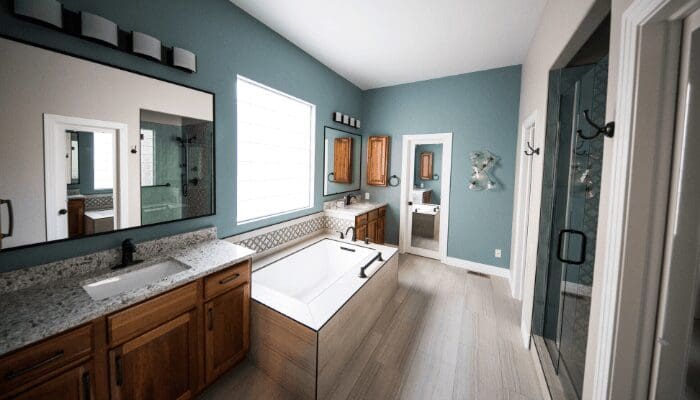‘This Home Needs TLC:’ The Fuzzy Area Between Gut Job and Move-In Ready
- Published on
- 5 min read
-
 Valerie Kalfrin Contributing AuthorClose
Valerie Kalfrin Contributing AuthorClose Valerie Kalfrin Contributing Author
Valerie Kalfrin Contributing AuthorValerie Kalfrin is a multiple award-winning journalist, film and fiction fan, and creative storyteller with a knack for detailed, engaging stories.
When a loved one needs TLC, you bring over soup and offer a lot of free hugs. In real estate, the well-known three letters that stand for “tender loving care” translate a little differently.
Let’s examine what “TLC” means for homebuyers and whether the common label on property listings is a warning sign of a project on your hands or your ticket to a great deal.

Will a little cosmetic facelift do the trick?
Various online sources warn buyers that “needs TLC” is a nice way of saying “fixer upper” or total teardown. What we found in our research and by talking to top agents in the field is that it’s all a little more nuanced.
In that sense, “TLC in real estate is totally an issue of perspective,” said Sue Strope, a top-selling agent in Florida’s Port Charlotte and Punta Gorda areas with 30 years of experience. “Everyone has a different idea of what that means.”
In some cases “TLC” means “quick fixer-upper”—in other words, a house that needs cosmetic changes such as paint, carpeting, or refinished floors but is otherwise structurally sound. A buyer could improve the house with upgrades to outdated touches such as kitchen cabinets and lighting fixtures, but they wouldn’t have a total gut job on their hands.
“For some people in a luxury market, TLC might mean that they need to scrub down the walls because there are fingerprints,” Strope says. (Talk about “light” repairs!)
Owner doesn’t have the funds or time for repairs
Some people may be selling a relative’s home and don’t have the time or financial capability to handle any repairs.
Others have taken care of the maintenance but haven’t upgraded outdated design features or appliances. They want to give buyers a heads-up that the home isn’t perfect, but “it’s not that there’s anything particularly wrong with the house,” explains Strope.
For example, a listing for a two-bedroom, two-bath condo in the prestigious Toluca Lake section of Los Angeles notes that the property “needs some TLC/modernization.” The photos indicate that the condo could benefit from new kitchen appliances while offering other perks: It’s located away from the street, offers an open floor plan, and comes with access to a garden patio.
Coming from a place of caution
Depending on market conditions and a home’s age, some agents will recommend that sellers avoid spending money on a total overhaul of their property as long as there are no structural or safety issues. In this case, they may highlight the floor plan and other features while noting that the place needs a bit of work—or TLC.
Some sellers and agents, out of an abundance of caution, will note that a house needs TLC when its troubles are mild so as not to mislead potential buyers.
So, even if you’re not exactly handy, don’t cross a “TLC” home off your list until you’ve at least browsed the photos and done a little more research to find out how much work it would be.

A chance to personalize and profit later
A home that “needs TLC” could be a great opportunity to save money upfront while infusing a property with your own personal tastes and preferences as you make cosmetic improvements.
Fixer-upper homes typically list for 8% below market value, according to the financial website MarketWatch. A lower sale price reduces your home’s assessed value for property tax calculations (so you could get an affordable house in a great neighborhood) and you can make the home worth more than you paid, netting a nice profit when you decide to sell.
Depending on where you live, you also may be eligible for a tax abatement, which is a tax credit for homeowners who improve their property’s value, according to Northwestern Mutual.
The drawback of such a purchase is the cost of any repairs. If the TLC that the property needs is cosmetic, you likely won’t blow your budget. But making structural changes requires checking local zoning laws and obtaining building permits (which cost about $1,091 on average nationally), or hiring a contractor—to say nothing of any surprises from the project not going according to plan.
Use this quick calculation to set your bid for a ‘TLC’ home
You can calculate whether you’re able to afford a home that needs TLC with a quick formula:
1. Figure out its value if it were up to speed with homes in the neighborhood that are already move-in-ready.
Do a comparative market analysis to look at nearby recently sold homes similar to the one you’re looking at in size and number of beds and baths, etc. Only include those homes that wouldn’t be classified as “needing TLC” in your analysis.
2. Estimate the cost of necessary repairs.
Visit sites such as HomeAdvisor.com (a network of professionals in over 500 home-related services and 70+ accumulated years in the industry) or Thumbtack (a company that offers skilled professionals in over 1,000 home-related services) for cost estimates of various home improvement projects you’d need to complete. Search by your ZIP code to get local estimates.
3. Subtract the estimated cost of repairs from comparable move-in ready values.
Let’s say homes in turnkey condition in the surrounding area are going for $275,000. You’ve estimated that you’d need to spend $25,000 to fix up the home to neighborhood standards with some light repairs. In that case, you cap your budget for the home at $250,000 and make the call that if you have to spend more, you’re out.
Just remember: Homeowners in general should expect to spend at least 2% to 5% of their home price on annual maintenance and repair, while major renovation costs can increase that to about 10% of the home’s value. Talk to your real estate agent about what you realistically can afford and what’s a fair price.
In addition, there is financial help available for buyers interested in single-family homes that need TLC.

Funding the purchase of a ‘TLC’ home: You’ve got options
Homebuyers who anticipate they’ll need to make repairs on their new home may be able to finance the cost of those improvements through their mortgage.
Let’s review a couple of programs of interest to buyers taking on homes that need some work:
FHA 203(k) loan
The FHA (Federal Housing Administration) Section 203(k) program enables homebuyers to “finance up to $35,000 into their mortgage to upgrade, improve, or repair their home,” according to HUD.gov.
With a 203(k) mortgage, the funds allocated for home repairs get placed in a designated escrow account (the rest go toward paying for the home). An approved 203(k) consultant comes in to help you prioritize and manage repairs on your new home.
The types of projects borrowers of 203(k) loans take on run the gamut to include major structural work, cosmetic improvements, elimination of health and safety hazards, landscaping work, and changes to a home’s core functions such as plumbing (HUD has a full list of the acceptable kinds of projects on its website).
Fannie Mae HomeStyle Renovation
Fannie Mae offers HomeStyle, a comparable program that tacks home rehab financing onto a buyer’s conventional mortgage. Funds from HomeStyle “can be used for any renovation,” Fannie Mae says, whether you plan to add a mudroom or replace the roof.
Fannie Mae caps its approved HomeStyle renovation costs at 75% of the home’s purchase price or 75% of the after-completed appraised value (whichever is lower), according to the website.
No matter what, inspect before you buy!
A home inspection is essential for any home of any condition. A buyer needs to know just what they’re getting into.
But some buyers become so enamored with a home’s “potential” that they gloss over warning signs, even from their agent. Strope recalls one couple who opted to skip the home inspection on a property where the kitchen’s built-in griddle was loaded with baking grease and children had smeared Jell-O on the walls.
The buyers were so excited to roll up their sleeves and fix up the place themselves that they were willing to ignore these red flags.
They later learned that someone had oddly stuffed clothes into the laundry room piping, among other bizarre issues. “Everything was such a disaster, and they kept coming back to me for months and telling me stories about all the horrible things in the house,” Strope said.

How much TLC are you willing to give a home?
After conversing with top agents in the business and consulting various definitions of “needs TLC,” it’s safe to say that those three letters typically indicate that a home needs some level of work. The question is how much—and the answer to that can vary dramatically. But you can expect a TLC home’s condition to fall somewhere between gut job and move-in ready.
Essentially, you might have a home seller who’d like to give buyers a heads-up that a bit of work is involved with a house, but not to the extent of the unlivable “fixer uppers” you see transformed on TV. This widens the buyer pool from flippers to budget-conscious buyers. It also communicates to buyers who want a place that’s move-in ready and (and will find even minor fixes too much) that the house probably isn’t for them.
That still leaves much room for interpretation, which is why it’s best to trust outside authorities like an inspector and your agent, who can clue you in about potential issues even if a listing doesn’t. From there, you can make the best decision for your house budget and general level of enthusiasm about home improvements.
Header Image Source: (Zakhar Mar/ Shutterstock)
